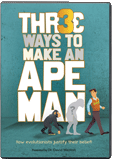
Climate-Controlled Coworkers
Design in Nature
The Creator gave a few select animals—such as horses and camels—unique abilities to serve alongside people in harsh environments.
Two animals often mentioned in the Bible are horses and camels. God clearly had our needs in mind when He created these amazing creatures. They are raised for transportation, carrying burdens, and fighting battles. Both are uniquely suited to labor with us in the heat of the day, but in very different ways.
We can work in the heat because of about two million sweat glands all over our bodies, capable of producing up to two quarts of water per hour! When sweat evaporates, it cools the skin, helping us maintain our normal body temperature.
Most mammals are not like this. While nearly all have active sweat glands in their footpads (where water keeps them soft and flexible), few have sweat glands that cool their whole body. Think of it, have you ever seen a sweaty dog or a sweaty cat?
The Sweaty Horse
The only animal you are likely to have seen dripping sweat is a horse. The horse’s ability to sweat profusely allows it to work with us in the heat of the day.
Indeed, down through the centuries, humans and horses have worked, traveled, and fought together. Horses are mentioned over 150 times in the Bible, beginning with Joseph trading food for horses and cattle during the seven-year drought in Egypt (Genesis 47:17).
Horses secrete sweat into their hair follicles so that the sweat emerges along with their growing hair. Unlike clear, watery human sweat, horse sweat is white and lathery. Why? It has been discovered that horse sweat contains a detergent called latherin that promotes the rapid, even spread of sweat over the horse’s oily skin and hair.
The Unsweaty Camel
Unlike horses, camels are specialized for desert conditions where water is not easily available. Their strategy is to lose or secrete as little water as possible. So how do they endure the heat?
Studies have shown that the camel is designed to allow a considerable rise in body temperature before resorting to sweating. In addition, a dehydrated camel can drink up to a third of its body weight in water when it’s available and tolerate severe dehydration when it’s not. Thanks to its long, powerful legs and large, padded feet that don’t sink in the sand, the camel can travel up to 100 miles (161 km) a day. No wonder they are called the “ships of the desert.”
God designed both of these amazing creatures to work with humans in honoring our Maker and Savior. The wise men who came to bear gifts and worship Jesus are a picture of this cooperation. They are traditionally pictured as riding camels, but some believe they rode horses. The Messiah Himself chose a donkey, a close relative of the horse, to carry Him into Jerusalem on that first Palm Sunday. Let us all be similarily devoted to Him who saved us from sin, death, and the power of Satan.
Answers Magazine
July–September 2015
This issue focuses on five powerful evidences that confirm creation and leave unbelievers without excuse.
Browse Issue SubscribeRecommended Resources

Answers in Genesis is an apologetics ministry, dedicated to helping Christians defend their faith and proclaim the good news of Jesus Christ.
- Customer Service 800.778.3390
- © 2024 Answers in Genesis





